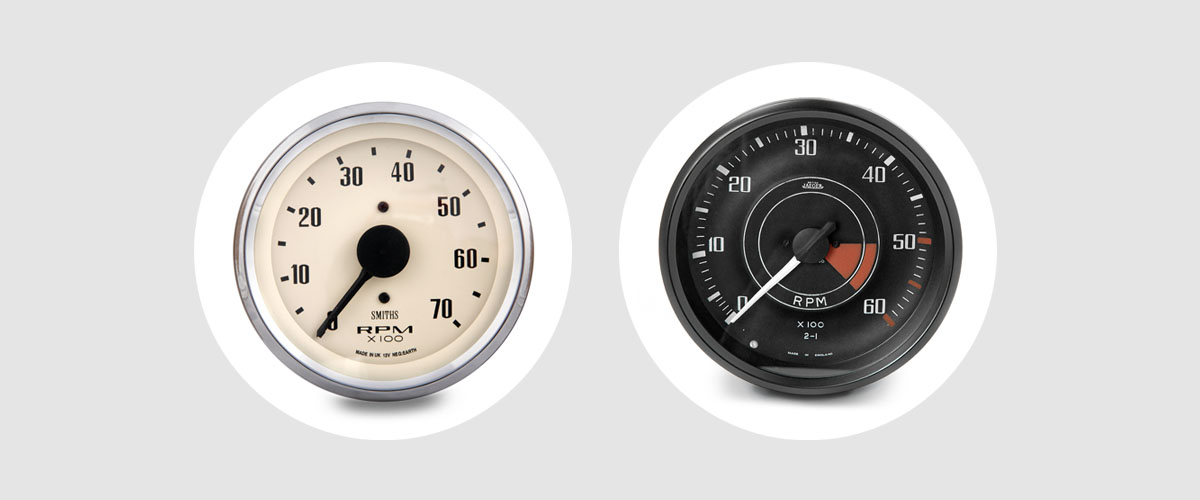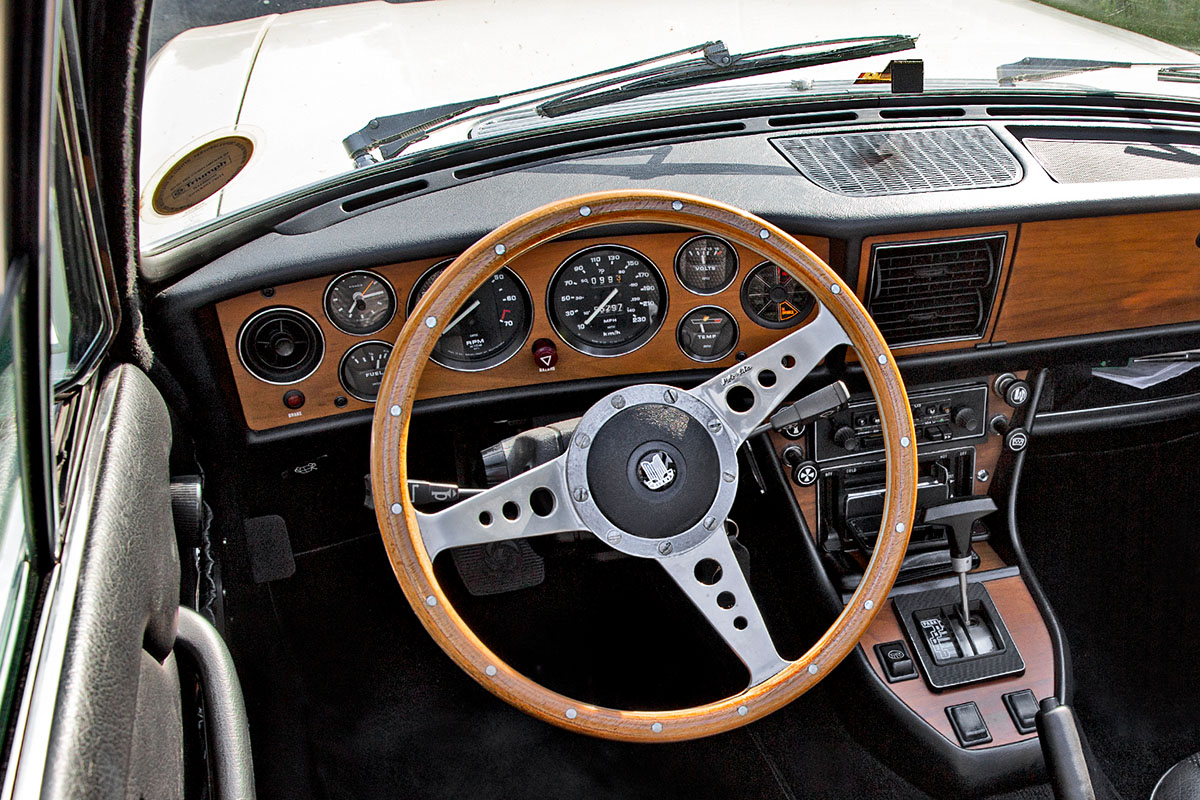Retrofit classic car rev counter
Today, it's hard to imagine a vehicle without a rev counter, but in the past it was not a very widespread optional extra. Unless you drove a sports car, which had them as standard equipment early on. Retrofitting classic cars with a rev counter is, however, easily possible, even for non-professionals. Here you can find out about the advantages of retrofitting, the difference between electrical and mechanical devices and how to proceed.

Poste : Vente
Mise à jour : 20.10.2023

Retrofitting a rev counter: Basics
First things first: When it comes to retrofitting a tachometer, it must be said that this only applies to electric tachometers. You either have a mechanical tachometer or you don't. In addition, it is already fitted to most English classics anyway. If you want to retrofit a rev counter on a classic car, you will have a continental classic in the garage waiting for an electric rev counter.
What is a rev counter?
- Aircraft engines rotate at 2,500 rpm
- older English sports cars turn up to 5,000 rpm
- Italian sports cars partly 8000 rpm
- Motorbikes also sometimes rev up to 15000 rpm
Why do you need a rev counter?

For the non-sporty driver, the tachometer is basically an instrument that helps to ensure proper engine operation and assists the driver in shifting gears "correctly", conserving the engine and optimising fuel consumption economically.
Use of tachometers
In short, a tachometer is used to indicate whether the current operation of the engine is safe or damaging. To do this, you use the scale on the rev counter, which is divided into several zones. Usually colour-coded in green, yellow and red. Because each engine has specific maximum speed limits, these zones are of course always adapted to the parameters of the unit.
Retrofitting a rev counter in the speedometer or as an additional instrument?
In most cases, this works both ways and the decision is either one of visual wear or one dictated by the available space. For most classic cars simply have no space provided for the instrument, as tachometers were hardly a standard feature in continental Europe's vehicles 40 years ago.
Sometimes you can install the rev counter in place of an existing clock in the cockpit, which you simply remove instead. In most cases, however, retrofitting can only be done in the form of an additional instrument near the speedometer or the steering wheel. There are universal housings that can be installed either on or under the dashboard. Take a look at the Limora Warehouse.
Mechanical and electrical versions: Differences
A distinction is made between mechanical and electrical tachometers. As already noted above, retrofitting is only possible on electric models. Both variants differ fundamentally in their mode of operation, i.e. how the speed is measured.
- In the mechanically driven rev counter, a flexible shaft turns a permanent magnet.
The shaft is usually powered by the engine control unit. The rotary
motion generates eddy currents which the indicator uses to display the
speed.
- Electric tachometers, on the other hand, work as follows: With this variant, a pulse is taken from the ignition coil. Depending on the number of cylinders, this results in the number of revolutions. This is done electronically, inexpensively and inconspicuously.
From theory to practice: What to do when retrofitting a rev counter?
Once a suitable console has been found for mounting in the interior, select a tachometer to match. Most consoles offer space for 2" devices, the measurement is international standard. Only 2 cables need to be attached to the tachometer, which has a diameter of 51 or 52 mm:
- A cable is connected to terminal 15, ignition plus.
This can be found professionally on the fuse box, or tinkered with on
the radio. This is how the new rev counter gets its operating voltage.
If the housing is made of plastic and the rev counter does not have a
ground, an additional ground cable must be laid.
- The second cable, which gives the unit the impulse, is connected to terminal 1 on the vehicle side, i.e. to the ignition coil.
- With some units, the lighting can be connected to the vehicle lighting. If this option is used, another cable is added, usually at terminal 58.
Finally, set the number of cylinders and the tachometer retrofit is complete. But beware: this does not work with diesel engines, of course, for which there are separate, but technically much more complex solutions.
Retrofit tachometer for classic car
If you are looking for a tachometer that fits perfectly into your classic car, both visually and technically, then Limora is the right place for you! We have a large selection of Smiths tachometers and also the matching accessories for tachometer retrofitting in classic vehicles.
If you have any questions, you can also contact our experts without any worries. So get started, get to know your engine better and save fuel to boot. All thanks to the right rev counter.